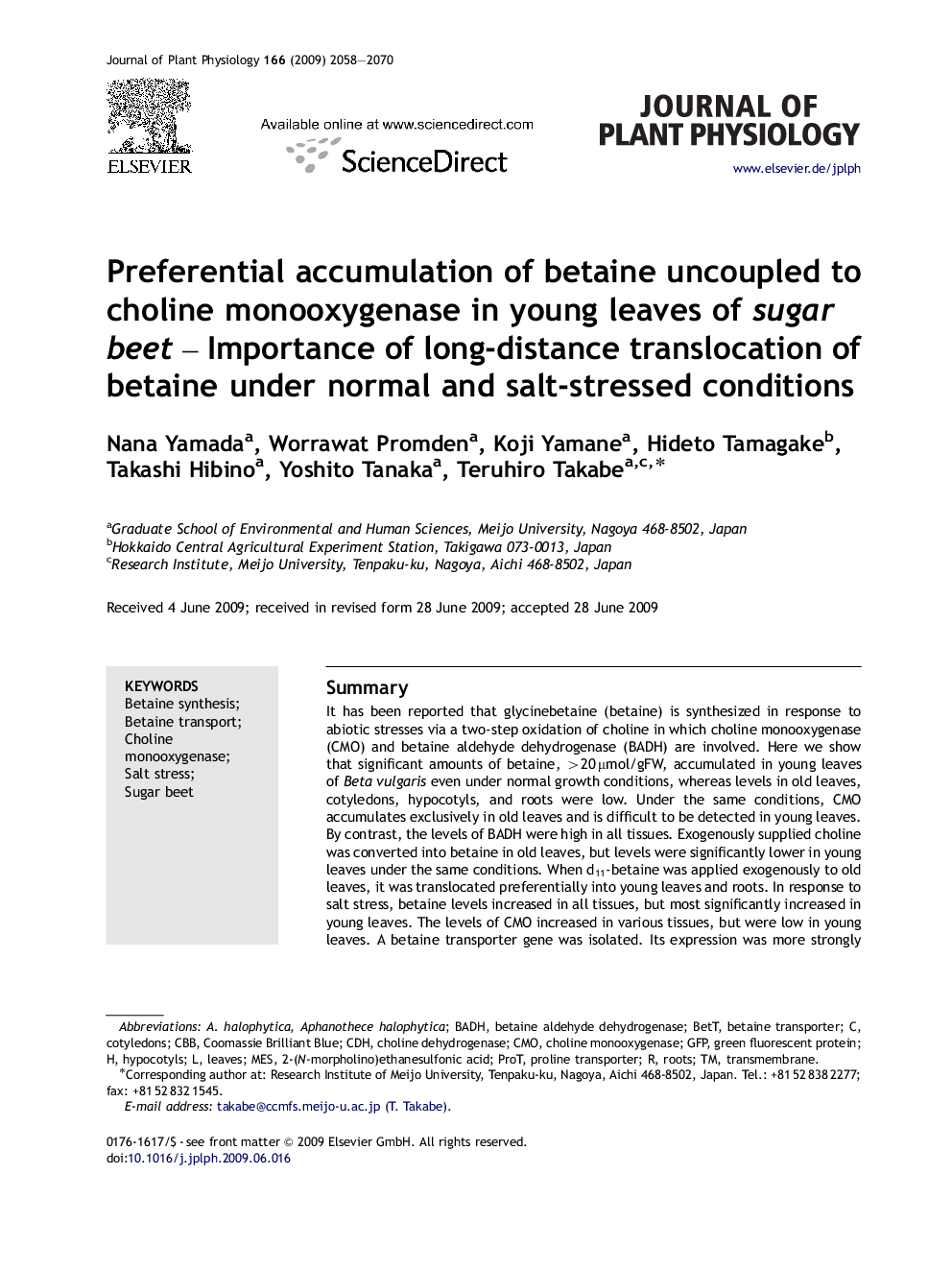| Article ID | Journal | Published Year | Pages | File Type |
|---|---|---|---|---|
| 2056661 | Journal of Plant Physiology | 2009 | 13 Pages |
SummaryIt has been reported that glycinebetaine (betaine) is synthesized in response to abiotic stresses via a two-step oxidation of choline in which choline monooxygenase (CMO) and betaine aldehyde dehydrogenase (BADH) are involved. Here we show that significant amounts of betaine, >20 μmol/gFW, accumulated in young leaves of Beta vulgaris even under normal growth conditions, whereas levels in old leaves, cotyledons, hypocotyls, and roots were low. Under the same conditions, CMO accumulates exclusively in old leaves and is difficult to be detected in young leaves. By contrast, the levels of BADH were high in all tissues. Exogenously supplied choline was converted into betaine in old leaves, but levels were significantly lower in young leaves under the same conditions. When d11-betaine was applied exogenously to old leaves, it was translocated preferentially into young leaves and roots. In response to salt stress, betaine levels increased in all tissues, but most significantly increased in young leaves. The levels of CMO increased in various tissues, but were low in young leaves. A betaine transporter gene was isolated. Its expression was more strongly induced in old leaves than in young leaves. Based on these data, we discussed the role of CMO and betaine transporter under stress and non-stress conditions.
